
Measure of Life
Is Canada Doing Enough to Reduce Deaths from Cancer?
Cancer is the leading cause of death in Canada. In 2020, it will be responsible for an estimated 83,000 deaths.
The burden of cancer falls on:

Patients and their families
Cancer is a life-changing diagnosis that lowers quality of life and longevity.
Health care systems
Hospitalizations, cancer treatments, and potential complications are costly, and those costs can add up.
Society
Cancer treatments and premature deaths take patients out of the workforce, leading to indirect costs from lost productivity.
How does Canada measure up?
Cancer deaths are declining in Canada, but are we doing enough?
Canada: Cancer report card
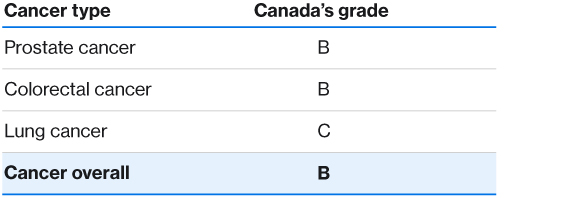
Sources: Statistics Canada; The Conference Board of Canada.
Provincial
Some provinces are doing better than others. British Columbia, Ontario, and Alberta have low mortality rates for cancer overall, while the Atlantic provinces have high rates.
B.C. has the lowest overall mortality rate in the country
(age-standardized mortality rate per 100,000 people, 2018)
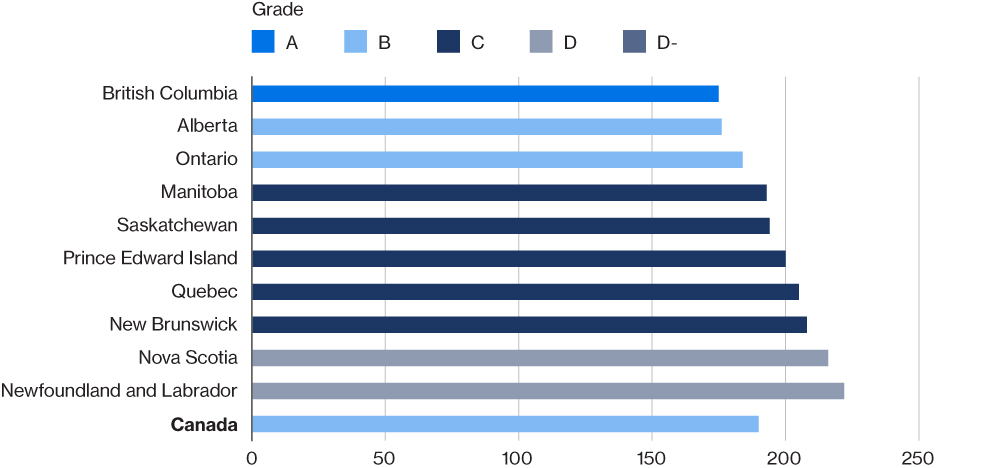
Sources: Statistics Canada; The Conference Board of Canada.
Provinces: Cancer report card
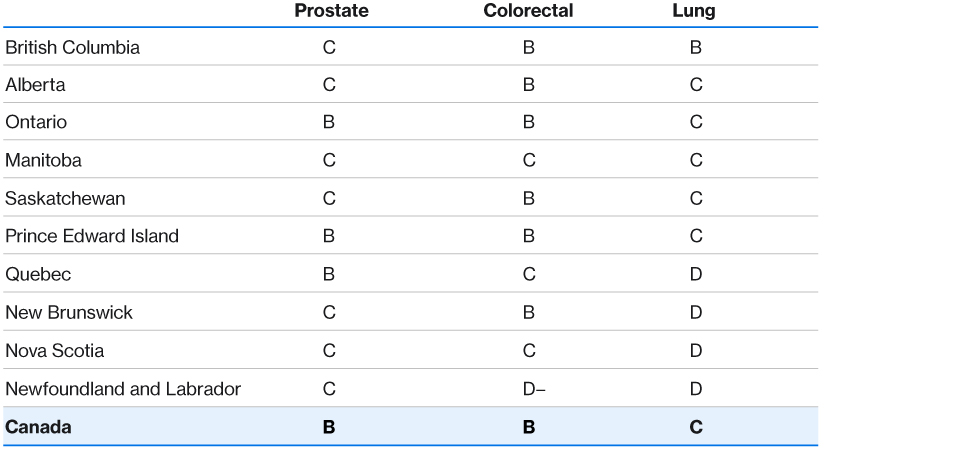
Sources: Statistics Canada; The Conference Board of Canada.
Early detection and screening can identify cancer at an earlier stage and save lives.
Let’s look at how Canada ranks relative to international peers.
Note: The territories were excluded from the analysis due to missing or incomplete mortality data.
International
Canada’s rank was average. We scored a “B” grade for overall mortality rate due to cancer.
Canada ranks near the middle in global comparisons
(age-standardized mortality per 100,000 people, all cancer types combined, 2018 [Canada] and most recent year [international])
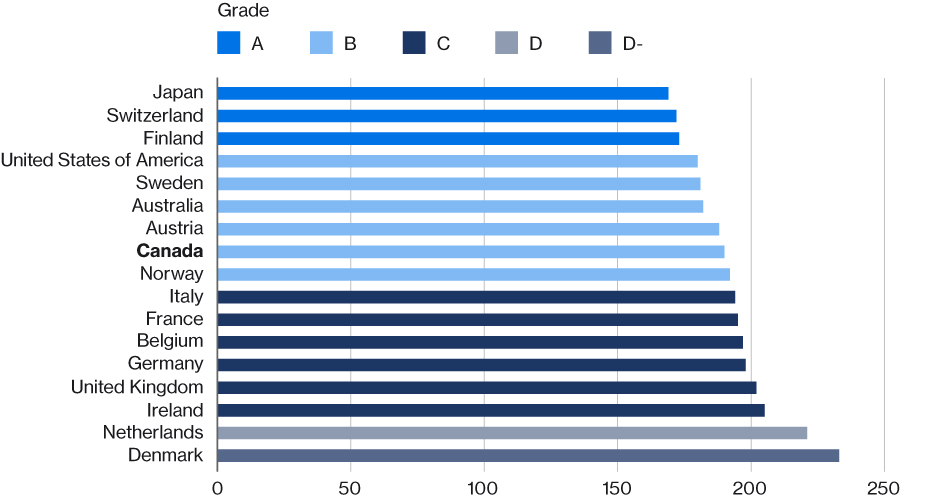
Sources: WHO; OECD; Statistics Canada; The Conference Board of Canada.
Canada’s mortality rate due to lung cancer is high relative to most peer countries
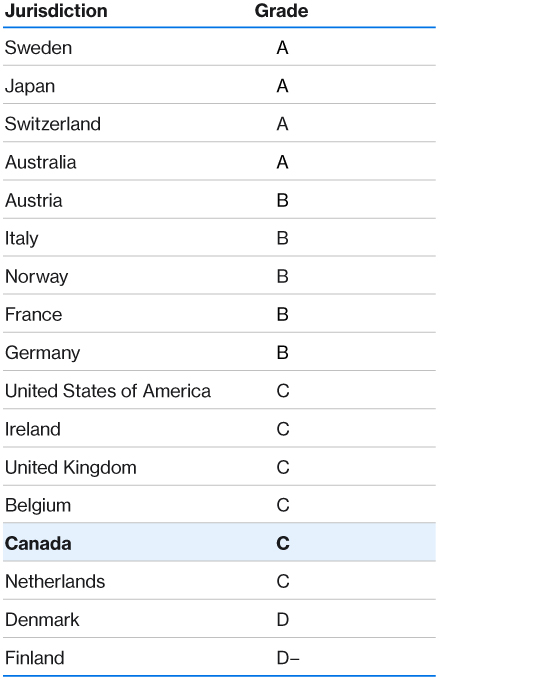
Sources: WHO; OECD; Statistics Canada; The Conference Board of Canada.
What’s needed

There is a lot of room to improve cancer mortality rates across the country.
Canada will need different strategies to level the playing field:
- Prevention—Public health initiatives can address risk factors to help people avoid cancer.
- Early detection and screening—It is easier to treat cancer in the early stages of development, which can improve outcomes for patients.
- Access to innovative treatment—New treatments and precision medicine are showing promising results. However, Canada’s access to innovative treatments is lagging.
Any reduction in incidence and mortality rates of cancers is invaluable. As we continue to uncover and apply innovations, we will see reductions in the health and economic burden of cancer.
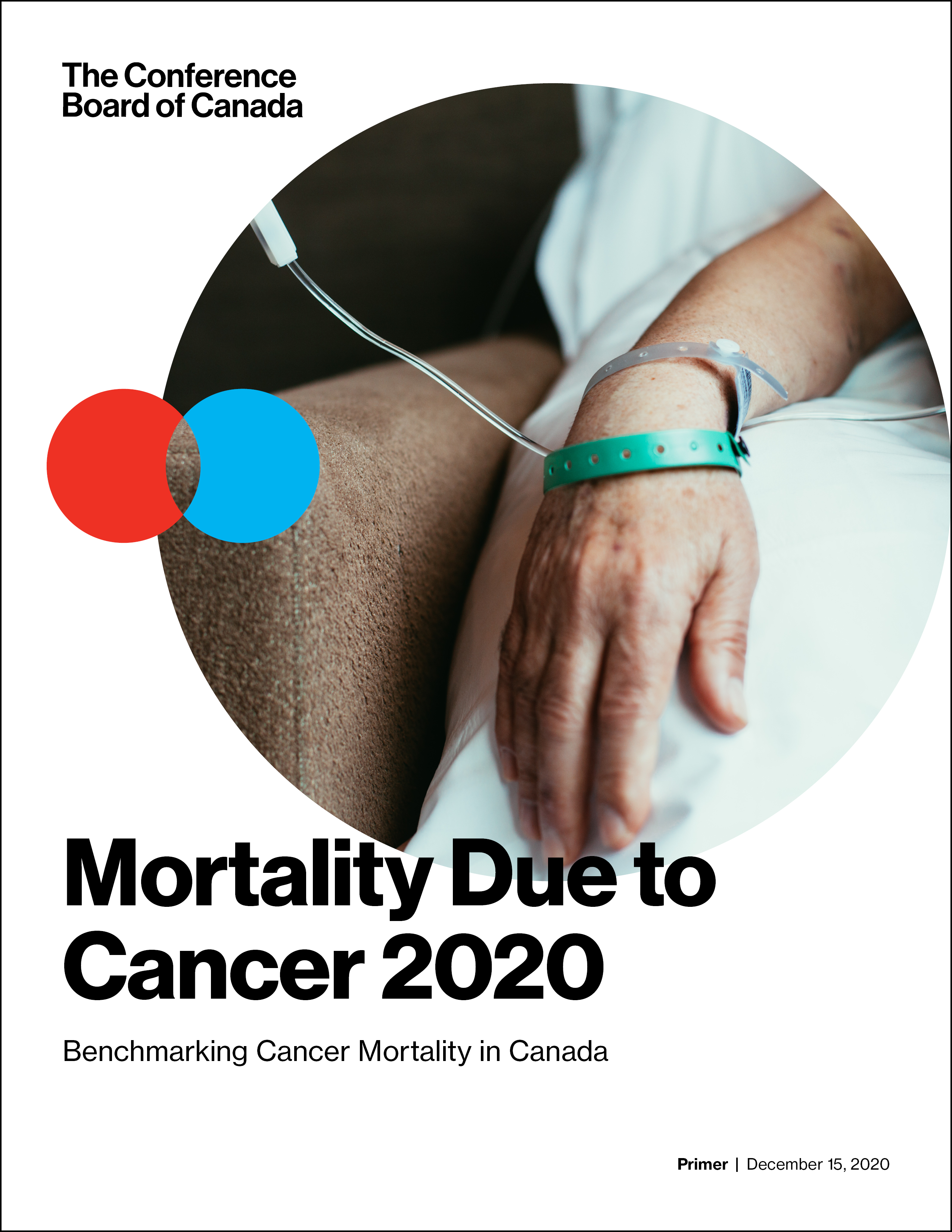
Download the primer for a deeper look.
Mortality Due to Cancer 2020: Benchmarking Cancer Mortality in Canada
December 15, 2020 • 50-min read

